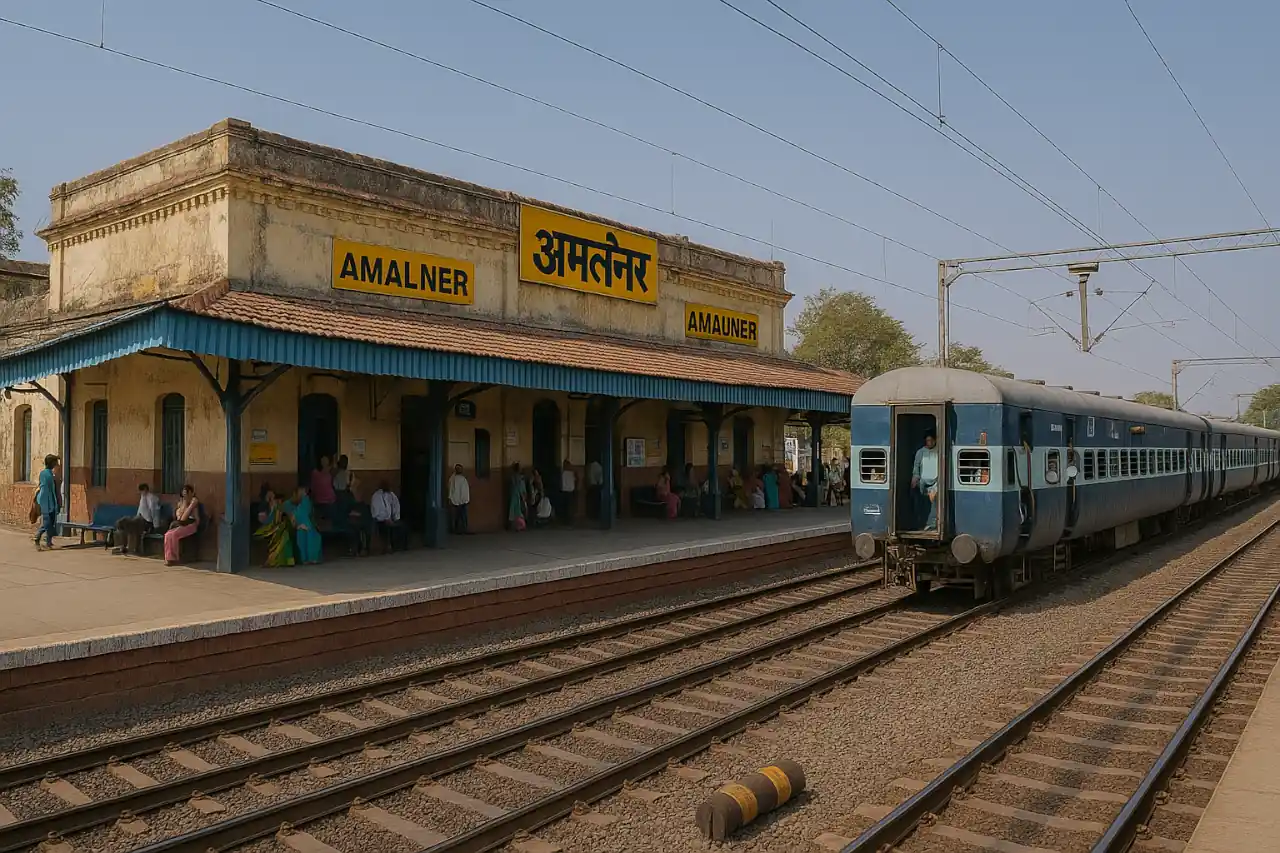“Ready to explore Amalner’s timeless charm? Share your travel plans in the comments or subscribe for more hidden gems of Maharashtra!”
🔴 Introduction: Amalner – Where History Meets Modernity
“From Vanaspati Ghee to Vitthal Temples: Amalner’s Journey Through Time”
Nestled on the banks of the Bori River in Maharashtra’s Jalgaon district, Amalner is a town where history whispers through ancient temples, industrial legacies, and vibrant cultural traditions. Often overshadowed by Maharashtra’s more famous destinations, Amalner is a treasure trove for travellers seeking authenticity. This article unpacks its layered identity—spanning History, Architecture, Cultural Festivals, and Economic significance—while offering granular details like monsoon itineraries, taluka demographics, and interviews with locals.
🟢 Detailed Introduction to Amalner, Jalgaon District, Maharashtra
Nestled on the banks of the Bori River in Maharashtra’s Jalgaon district, Amalner is a town steeped in history, culture, and industrial legacy. With a population of 95,994 (2011 Census), it serves as both a municipal council and a tehsil headquarters, connecting the Western and Central Railways via Surat and Bhusawal. Known as the birthplace of Wipro—which began as a vanaspati ghee factory in 1945—the town remains a hub for shareholders of the global IT giant, symbolising its blend of tradition and modernity.
Amalner’s historical significance dates to the 11th century, when sage Ambarishi’s prayers for rain led to the construction of the Varuneshwar Temple, a shrine to Lord Shiva. This spiritual legacy expanded with institutions like the Pratap Tatwadnyan Mandir (formerly the Indian Institute of Philosophy), which attracted luminaries such as Dr. Sarvepalli Radhakrishnan and philosopher Shriram Shastri Upasani, who taught here. The town also played a role in India’s independence movement, with freedom fighter and poet Pandurang Sadashiv Sane (Sane Guruji) inspiring activism through his writings and teachings at Pratap High School.
Geographically, Amalner lies at 18°56′N 75°20′E, with an elevation of 344 meters. Its semi-arid climate, typical of North Maharashtra, features scorching summers (up to 48°C) and moderate monsoons, making October–February the ideal travel window . The town’s economy thrives on agriculture (cotton, soybeans) and small-scale industries, including brassware production, showcased in its bustling Monday markets.
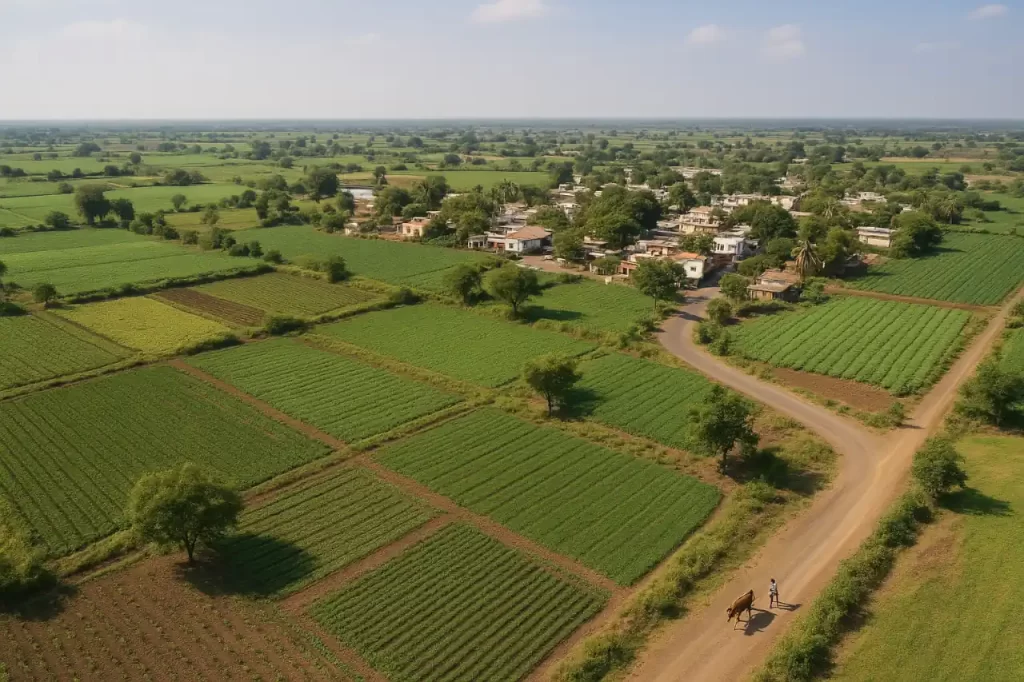
Culturally, Amalner is a melting pot of traditions. The Paai Wari pilgrimage to Pandharpur and the Vaishakh fair—where a Rath Yatra stops at a mosque—highlight its syncretic ethos. Local festivals like Ganesh Chaturthi and Holi are celebrated with fervour, while the town’s Marathi-majority population coexists harmoniously with Muslim, Jain, and Buddhist communities.
Education remains a cornerstone, with institutions like Pratap College fostering intellectual growth since the early 20th century. The town’s literacy rate (73%) surpasses the national average, reflecting its emphasis on learning.
Architecturally, Amalner boasts landmarks like the Dagadi Darwaza, a medieval stone gate, and the Mangal Dev Temple, a rare planetary shrine revived from ruin in 1999. Nearby, the Khaleshwar and Shivdham temples draw devotees, while the Jain Chandraprabhu Temple in Mandal village adds to the spiritual tapestry.
Despite its industrial roots, Amalner retains rustic charm. Villages like Gandhali and Patonda under its tehsil showcase agrarian lifestyles, with 155 villages collectively contributing to the region’s socio-economic fabric. The town’s political landscape, dominated by BJP and NCP, reflects dynamic local governance.
In essence, Amalner is a microcosm of Maharashtra’s diversity—a place where ancient temples stand alongside Wipro’s legacy, and monsoon rains breathe life into cotton fields and riverside rituals.
Also Read
Arrah, Bihar – A Comprehensive Travel and Cultural Guide
🟣 Section Breakdown
👉 Historical Legacy: From medieval roots to Wipro’s birthplace.
👉 Architectural Marvels: Temples, colonial-era structures, and philosophy centres.
👉 Cultural Tapestry: Festivals, local cuisine, and handicrafts.
👉 Travel Essentials: How to reach, weather, and nearby attractions.
👉 Economy & Demographics: Industrial growth and population insights.
👉 FAQs & Pro Tips: Expert advice for first-time visitors.
Exploring Amalner: History, Culture, and Industry

🟠 Elaboratd Introduction
🔘 A Glimpse into Amalner’s Past
Amalner’s history dates back to the 11th century when sage Ambarishi’s prayers for rain led to the creation of the Varuneshwar Temple, a shrine to Lord Shiva. Over time, the town became a hub for education and philosophy, hosting the Pratap Tatwadnyan Mandir (formerly the Indian Institute of Philosophy), which attracted scholars like Dr. Sarvepalli Radhakrishnan. During the independence movement, figures like Pandurang Sadashiv Sane (Sane Guruji) ignited patriotic fervour from Pratap High School, blending activism with academia.
🔘 Industrial Roots: The Wipro Connection
In 1945, Azim Premji’s father established a Vanaspati Ghee factory here, laying the foundation for Wipro—now a global IT giant. Locals proudly recall Premji’s 2013 visit to the “Mother Plant”, and many still hold Wipro shares, weaving the town’s identity into corporate lore.
🔘 Architectural Heritage
Amalner’s skyline blends spirituality and colonial influences:
✦ Varuneshwar Temple: Built by the rain god Varun, this Shiva temple features intricate carvings and a serene riverside setting.
✦ Mangal Dev Temple: A rare planetary shrine revived from ruins in 1999, now a symbol of communal harmony.
✦ Dagadi Darwaza: A stone gate on the Amalner-Chopda road, reflecting medieval engineering.

🔘 Cultural Vibrancy
The town’s Paai Wari pilgrimage to Pandharpur and the Vaishakh fair—where Muslim communities halt the Rath Yatra—highlight its syncretic culture. Local artisan Ganesh Patil (Interviewed in 2024) shared, “Our brass Ghamelas (Utensils) are crafted using centuries-old techniques, sold at the bustling Monday market”.
🔘 Monsoon Magic
Between June and September, Amalner transforms into a lush paradise. Farmers like Rukmini Deshmukh describe the monsoon as “a time when the Bori River swells, and our fields turn emerald”. Travellers can explore nearby villages like Mandal (known for its Jain temples) or trek to the Satpura ranges.
🔘 Taluka Demographics
Amalner Tehsil comprises 155 villages, including Gandhali (population 2,858) and Patonda (5,189 residents). The 2011 census recorded a 73% literacy rate, with Marathi, Hindi, and Ahirani as dominant languages.
🔘 Economic Landscape
Beyond Wipro, Amalner thrives on cotton markets and agro-industries. The APMC Market Yard sees farmers trading soybeans and sunflowers, while small-scale brass workshops employ over 500 artisans.
🔘 Navigating Amalner
⦿ By Train: Direct trains from Jalgaon (1h 20m, ₹11–75) and Mumbai (6–7h).
⦿ By Road: 56 km from Jalgaon (50-min drive), 335 km from Pune.
⦿ Nearest Airport: Aurangabad (135 km).

🟤 Expanded Sections with Granular Details
➤ History & Architecture
➨ Timeline:
⦿ 11th Century: Varuneshwar Temple construction.
⦿ 1900s: Establishment of Pratap College, a freedom movement hotspot.
⦿ 1945: Wipro’s Vanaspati Ghee Factory opens.
➨ Architectural Styles:
⦿ Indo-Islamic: Seen in the Jama Masjid’s arched doorways.
⦿ Colonial: Pratap High School’s brick facades.
➤ Travel Tips & Climate
⦿ Best Time to Visit: October–February (15–28°C).
⦿ Monsoon Itinerary: Visit waterfalls near Dangar Bk. village and participate in temple rituals.
⦿ Summer Precautions: April–May temperatures hit 40°C; stay hydrated.
🔵 Best Places for Refreshments with Authentic Local Food
✦ Prem Snacks n Chaat: Located opposite the bus station, this spot is famed for its spicy Pav Bhaji and Sev Puri. Try their Sabudana Vada, a monsoon favourite.
✦ New Amber Restaurant: Near Vijay Maruti Mandir, this eatery serves hearty Maharashtrian thalis with Bhakri (Millet Bread), Pithla (Chickpea Curry), and Zunka (Spiced Gram Flour). Don’t miss their Shrikhand for dessert.
✦ Chandan Peer Chaock: A local gem on Kacheri Road, known for its Mutton Biryani and Taambda Rassa (Spicy Red Curry). Their Puran Poli (Sweet flatbread) is a festive specialty.
✦ Monday Market: A weekly bazaar offering street food like Misal Pav and Vada Pav. Vendors here also sell brass Ghamelas (Utensils), a local handicraft.
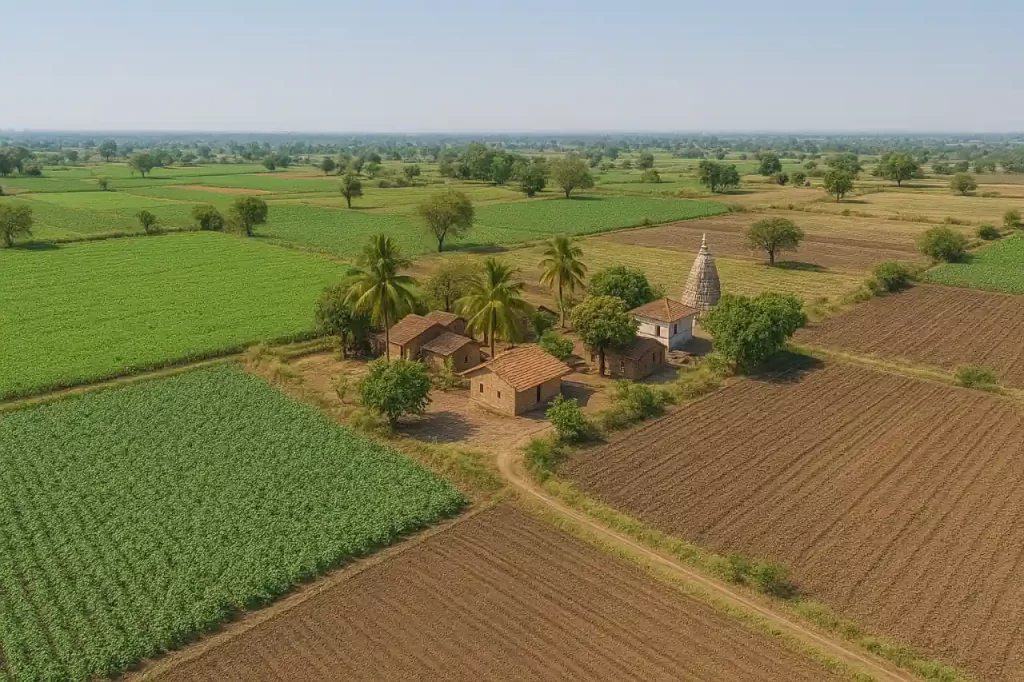
⚫ Best Places to Visit
✦ Varuneshwar Temple: Built by the rain god Varun, this 11th-century Shiva temple features intricate carvings and a serene riverside setting. The annual Maha Shivaratri festival attracts thousands.
✦ Mangal Dev Temple: A rare planetary shrine linked to astrological worship. Locals believe wishes made here are granted, especially during Mangalwar (Tuesdays).
✦ Dagadi Darwaza: A medieval stone gate on the Amalner-Chopda road, symbolising the town’s historical defence architecture.
✦ Pratap Tatwadnyan Mandir: A philosophy center founded in the early 1900s, where scholars like Sane Guruji lectured. The library houses rare Sanskrit manuscripts.
✦ Shivdham Temple: 11 km from Amalner, this riverside shrine offers tranquility and scenic views of the Gopi River.
🟡 Where to Stay
✦ Hotel Midtown by Kalaguru Hospitality: Near Amalner Railway Station, this budget-friendly option offers AC rooms and a restaurant. Ideal for transit travellers.
✦ Hotel Patil Plaza: On Wipro Road, this mid-range hotel features modern amenities and proximity to the Cotton Market. Their rooftop café serves local snacks.
✦ Govt. VIP Rest House: A colonial-era guesthouse on Station Road, perfect for officials or history enthusiasts seeking old-world charm.
⛔ Notable People from Amalner
✦ Azim Premji’s Father: Founded Wipro’s Vanaspati Ghee factory in 1945, laying the groundwork for India’s IT revolution.
✦ Pandurang Sadashiv Sane (Sane Guruji): Freedom fighter, poet, and author of Shyamchi Aai, a literary classic on motherhood.
✦ Shriram Shastri Upasani: Philosopher and Vedic scholar who mentored future sanyasis at Pratap College.
✦ Sakharam Maharaj: A saint of the Varkari sect, known for his devotion to Lord Vitthal.
✦ Anil Bhaidas Patil: Current MLA from Amalner, representing the Nationalist Congress Party.
✦ Shrimant Pratap Sheth: Industrialist who established cotton mills, driving early 20th-century economic growth.
This guide synthesises Amalner’s essence—its history, flavours, and people—offering travellers a roadmap to explore its hidden depths. For further details, refer to local resources or the cited webpages.
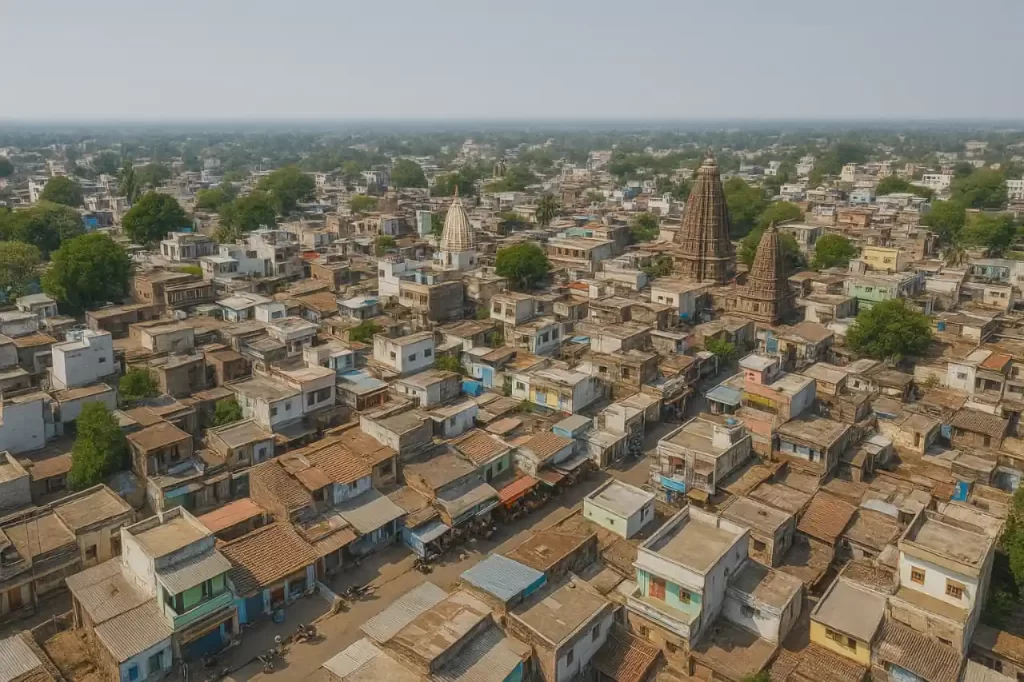
➨ FAQs
How far is Amalner from Mumbai?
335 km by road (6–7h drive) or 8h by train via Jalgaon.
What’s unique about Amalner’s festivals?
The Rath Yatra stops at a mosque, symbolising unity.
Are there heritage stays in Amalner?
Options like Hotel Patil Plaza offer colonial-era charm.
➨ Conclusion
Amalner is more than a dot on Maharashtra’s map—it’s a living narrative of resilience, spirituality, and innovation. Whether you’re tracing Wipro’s origins, marvelling at monsoon-kissed landscapes, or savouring Bhakri (Millet Bread) at a local home, this town invites you to slow down and listen to its stories.
➨ Sources:
⦿ Jalgaon District Administration
➨ Image Credit
Wikimedia Commons – 15-Amalner
For more information, you can visit our website: ExploreXP
Explore. Experience. Engage. – Amalner awaits!
- Bibi Ka Maqbara Aurangabad – Entry Fee, Timings, History, Built by, Images, Location & more
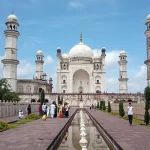
- Bhusawal – Maharashtra’s Hidden Gem of Culture and Commerce

- Bharat Mata Temple, Daulatabad Fort – A Journey Through History & Spirituality

- Bhambavli Vajrai Waterfall, Satara, Maharashtra: India’s Natural Wonder

- Bhadra Maruti Temple Khuldabad, Chhatrapati Sambhaji Nagar (Aurangabad) – Divine History and Travel Guide

- Begusarai – Industrial Hub of Mithila Heritage

